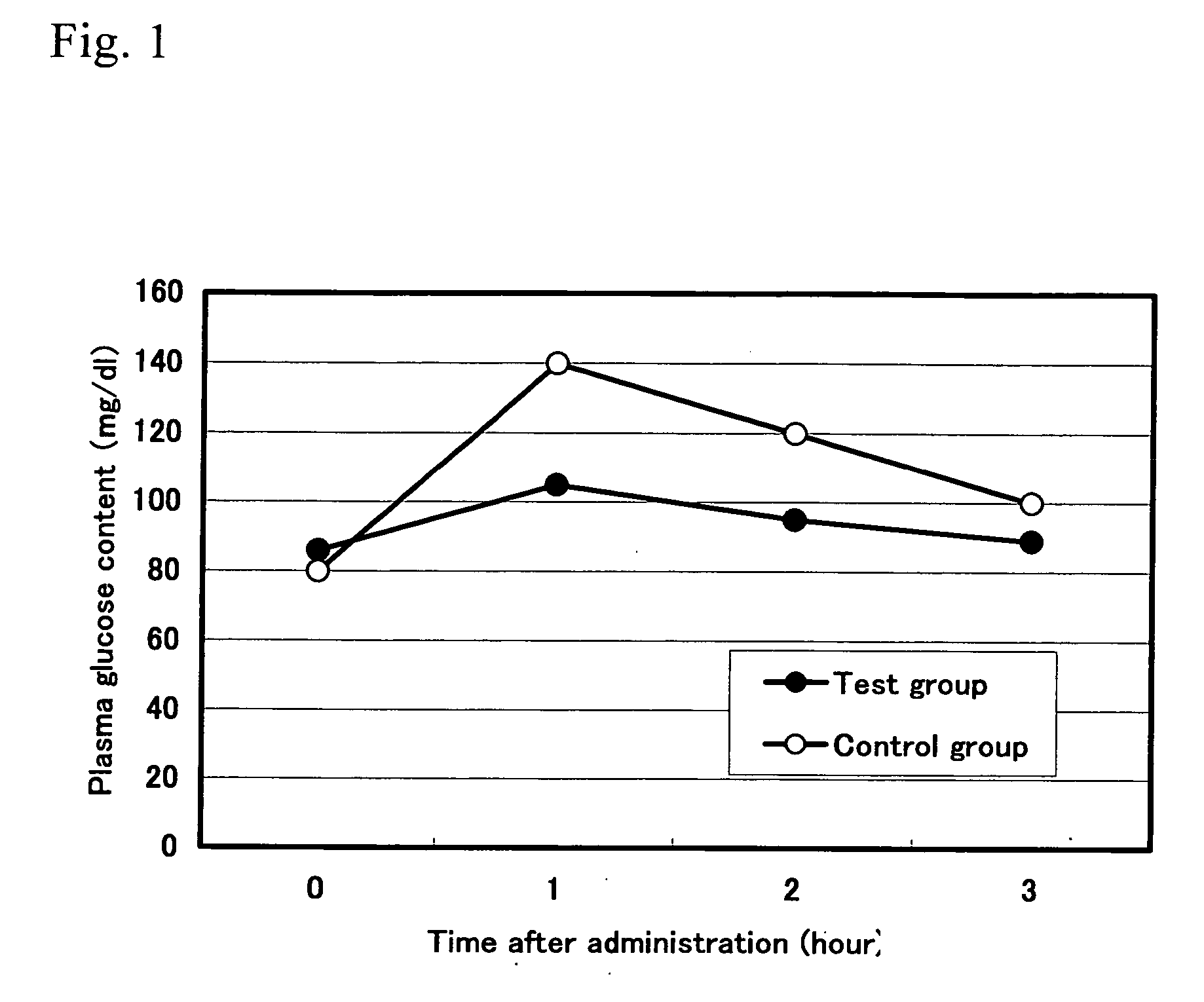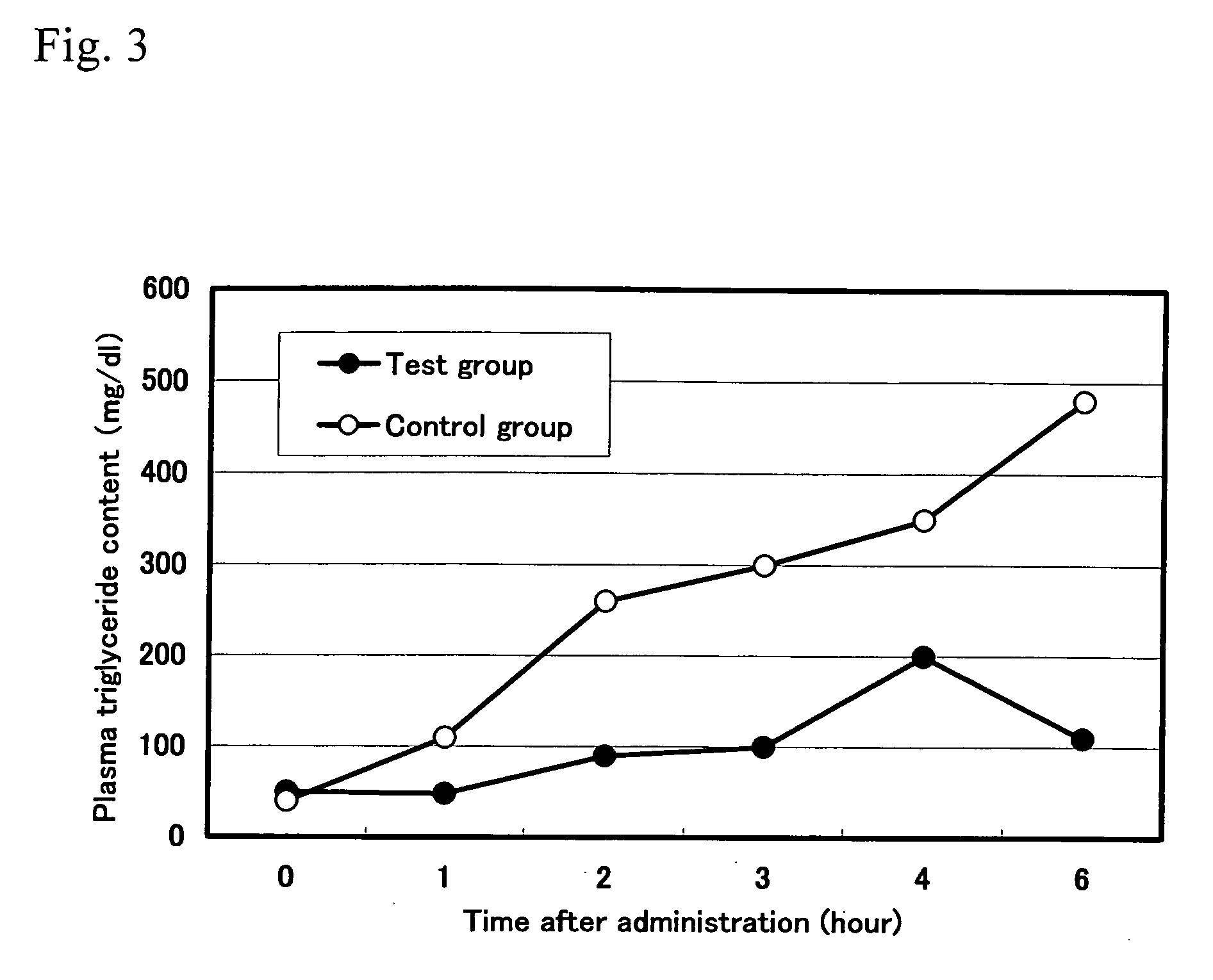Antiobesity agent using hen's egg antibody against digestive enzymes
a technology of digestive enzymes and antibodies, applied in the field of antibodies, can solve the problems of obesity, hyperlipidemia or arterial sclerosis, obesity, etc., and achieve the effect of high substrate specificity and high safety
- Summary
- Abstract
- Description
- Claims
- Application Information
AI Technical Summary
Benefits of technology
Problems solved by technology
Method used
Image
Examples
example 1
Preparation of Anti-Glycolytic Enzyme Hen-Egg Antibody
(1) Swine Pancreatic Amylase
[0050] In this example, α-amylase purified from swine pancreas was used as a glycolytic enzyme. Antigens for immunization, immobilized antigens for ELISA, and swine pancreatic amylase used in the examples were obtained from ELASTIN PRODUCTS CO., INC. (Missouri, U.S.A.). The enzyme activity of the swine pancreatic amylase used herein was 1,5000 units / mg protein.
(2) Production of Anti-Pancreatic Amylase Hen-Egg Antibody
[0051] As hens to be immunized, a group of around 18-week-old White Leghorn strain, Hyline W77 line hens was used. Swine pancreatic amylase obtained in (1) was adjusted to be 0.5 mg / mL (7500 units / mL), and then admixed with an oil adjuvant. 0.5 mL each of the mixture was injected into the pectoral muscle on the right and that on the left (initial immunization). 8 weeks later, booster immunization was carried out using an antigen (1.0 mg / mL (15,000 units / mL)) in an amount double that ...
example 2
Amylase Activity Inhibition Test
[0054] The inhibition rate of amylase activity was measured using human pancreatic α-amylase (ELASTIN PRODUCTS CO., INC. Missouri, U.S.A.) and “Amylase-Test Wako” manufactured by Wako Pure Chemical Industries. The anti-pancreatic amylase antibody purified from hen egg yolks and the solution of the antibody purified from the egg yolks of unimmunized hens and an enzyme solution (0.05 mg / mL human pancreatic amylase) were mixed in equivalent amounts. In addition, as a positive control, a buffer containing no antibodies and an enzyme solution were treated similarly and then used. Subsequently, the enzyme activities of these samples were measured using the “Amylase-Test Wako.” A method used herein involves preheating 1.0 mL of a substrate buffer (0.25 M phosphate buffer (pH 7.0) and 400 μg / mL soluble starch) at 37° C. for 5 minutes, adding 20 μL of the above mixed solution, and carrying out reaction at 37° C. for 7 minutes 30 seconds. Afterwards, 1.0 mL of...
example 3
Starch Loading Test
[0057] 20 approximately 6-week-old Wister male rats that had been loaded with starch were divided into 2 groups. To the test group, 1.0 mL of 1.0% solution of the anti-pancreatic amylase antibody purified from hen-egg yolks obtained in Example 1(4) was administered once, and to the control group, the same amount of the antibody purified from the egg yolks of unimmunized hens was orally and forcibly administered. Blood was collected at 1 hour, 2 hours, and 3 hours after administration, and then blood glucose content and insulin content were measured.
Results
[0058] Experimental results are shown in FIGS. 1 and 2. The above results showed that, compared with the control group, the blood glucose concentration and insulin concentration were significantly lower in the group to which the antibody of the present invention inhibiting the enzyme activity of α-amylase and purified from the hen-egg yolks had been administered. Based on these results, it was concluded that ...
PUM
| Property | Measurement | Unit |
|---|---|---|
| Composition | aaaaa | aaaaa |
Abstract
Description
Claims
Application Information
 Login to View More
Login to View More - R&D
- Intellectual Property
- Life Sciences
- Materials
- Tech Scout
- Unparalleled Data Quality
- Higher Quality Content
- 60% Fewer Hallucinations
Browse by: Latest US Patents, China's latest patents, Technical Efficacy Thesaurus, Application Domain, Technology Topic, Popular Technical Reports.
© 2025 PatSnap. All rights reserved.Legal|Privacy policy|Modern Slavery Act Transparency Statement|Sitemap|About US| Contact US: help@patsnap.com



